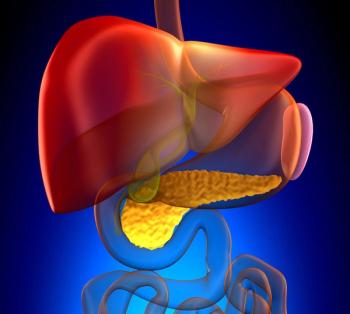
Oncology NEWS International
- Oncology NEWS International Vol 8 No 5
- Volume 8
- Issue 5
Elective Lymph Node Dissection Supported in Some Melanomas
ORLANDO-Ten-year survival results from a major intergroup study support the use of elective (immediate) regional lymph node dissection (ELND) rather than watchful waiting for patients with intermediate-thickness melanomas (1 to 4 mm).
ORLANDOTen-year survival results from a major intergroup study support the use of elective (immediate) regional lymph node dissection (ELND) rather than watchful waiting for patients with intermediate-thickness melanomas (1 to 4 mm).
Charles M. Balch, MD, of the University of Southern California, reported the results at the Society of Surgical Oncologys 52nd Annual Cancer Symposium, on behalf of the Intergroup Melanoma Committee.
The prospective, randomized trial included 740 stage I or II melanoma patients (no regional lymph node metastases). Eligible patients were stratified according to tumor thickness, anatomic site, and ulceration, and then randomized to either elective lymph node dissection or nodal observation. Median follow-up was 9 years (maximum, 15 years).
This trial was designed with the understanding that not all node-negative melanoma patients benefit from node dissection, Dr. Balch said. The debate was whether prognostic factors could identify subgroups for whom a node dissection could be therapeutic. The focus was on patients with intermediate-thickness melanomas, who are at high risk for regional disease and low risk for distant disease at the time of diagnosis.
Overall 10-year survival was not significantly different for patients who received elective lymph node dissection or nodal observation (77% vs 72%; P = .09). However, node dissection did provide survival benefits for several subgroups of patients. The increases in 10-year survival for specific groups were as follows:
From 77% to 84% for patients with nonulcerative melanomas (P = .036)
From 79% to 86% for patients with tumor thickness of 1 to 2 mm (P = .038)
From 73% to 81% for patients 60 years of age or younger (P = .01)
From 81% to 94% for patients with tumors 1 to 2 mm thick and no ulceration (P = .003)
This is the first trial to definitively demonstrate a survival benefit for surgical removal of regional metastases of melanoma, Dr. Balch said. These 10-year follow-up data demonstrated even more strongly than previously reported 5-year data that prospectively defined groups of patients with intermediate-thickness melanomas, especially those with nonulcer-ative melanomas and those with tumors 1 to 2 mm thick, have a significant survival benefit from node dissection.
Articles in this issue
over 26 years ago
Delirium Is Often Misdiagnosed in Advanced Cancerover 26 years ago
Preop Chemo Recommended for Locally Advanced Diseaseover 26 years ago
High Degree of Variability in HIV Testing Throughout the USover 26 years ago
Physicians Need ‘Coherent Game Plan’ for Care of Dyingover 26 years ago
NCI Funds Pediatric Brain Tumor Consortiumover 26 years ago
Marketing Your Cancer Center to Today’s Savvy Consumersover 26 years ago
Axillary Irradiation Can Replace Dissection in Some Breast Cancer’sover 26 years ago
Dr. Bailes Urges Oncologists to Act Against APC Proposalover 26 years ago
Broad Coalition of Health Care Groups Opposes APCsover 26 years ago
Depression and Anxiety Difficult to Diagnose in Cancer PatientsNewsletter
Stay up to date on recent advances in the multidisciplinary approach to cancer.


















































































